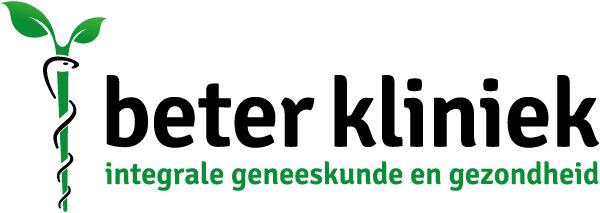What is hyperthermia?
Hyperthermia uses deep thermal heat and radiofrequency. Because of this combined effect, hyperthermia is applicable for many chronic conditions
Some examples:
- Tendinopathy (Achilles, shoulder)
- Osteoarthritis
- Post-operative
- Muscle Tears
- Sprains and strains
- Promotion of fracture healing
- Reduce pain
- Lower back pain
- Muscle Tension
- Trigger points
- Fibromyalgia
THE SCIENCE AND HISTORY OF RADIO FREQUENCY AND INDIBA
Radiofrequency is part of the electromagnetic spectrum. It was first discovered by two very brave French guys (a physiologist named d'Arsonval and his faithful assistant) in the 19th century. They discovered that it was possible to heat body tissue. During their many experiments, they thought they would die-and all in the name of science!). They lived to tell their story and more than that; they discovered that using 1 ampere gave a warming sensation. Their discovery was subsequently further developed by some better-known names, such as Nikola Tesla and Heinrich Hertz.
Now we jump in time to biomedical scientists, who in 1983 began exploring the application of radiofrequency electromagnetic currents in therapy. That's when the first radiofrequency device, now called INDIBA, was launched. Long ago we called the technology TEC or TECAR and the application of this technology Tecartherapy. Since this description is not really clearly defined, today and also the scientific community we use the term CRET (capacitive resistive electrical transfer) or CRMRF (capacitive resistive monopolar radio frequency).
Since the launch of the very first device, INDIBA has further developed its technology around 0.5 MHz and defined specific radio frequency applications up to 448 kHz based on extensive scientific testing and comparison of frequencies in this range.
During more than 19 years of molecular research at the Bio Electro Magnetica Department of the Ramón y Cajal Hospital in Madrid, numerous articles have been published. They have determined the optimal radio frequency of 448 kHz by looking at stem cells, healthy human cells and cancer cells. This important research has shown stem cell differentiation and cancer cell-related effects, demonstrating the safety and efficacy of the biostimulation of INDIBA 448kHz technology (Hernandez-Bule et al 2014a, b, 2017).
For over 35 years we have perfected our technology, with the latest launch of our CT devices with the most stable frequency to date and a new feature of continuous modulation. Both features allow even safer and more effective treatment of acute injuries when it is imperative that tissue heating does not occur (Feibal and Fast 1976, Wallace et al 1979).
Biostimulation is used in acute injuries with no thermal effect, accelerating tissue repair, reducing pain and reducing swelling. The body's natural repair process is faster and more importantly, there is still an increase in blood flow that provides oxygen and nutrients for the repair process (Kumuran and Watson 2018).
In subacute and chronic conditions, INDIBA biostimulation is combined with a deep thermal effect that lasts for more than 45 minutes (Kumaran and Watson 2015), significantly increasing deep blood flow and volume (Kumaran and Watson 2018a). This provides a tremendous amount of nutrients and oxygen and can provide the energy needed to stimulate recovery from chronic conditions!
Indiba technology is combined with rehabilitation exercises; either by performing them during an Indiba treatment or by using the thermal effects after an INDIBA treatment.
Due to many published studies, Indiba has the absolute market position in terms of radio frequency applications and has the most reliable radio frequency devices. No other company invests so much in research and development.
Our customers and their patients can be confident that Indiba technology is completely safe.
Check out some examples of our research below or contact us. Our experts can tell you all about electrotherapy and, more specifically, radiofrequency.
Currently, we still have not discovered all the various health benefits of 448 kHz frequency. Studies are continuously taking place and the following universities have already published studies on INDIBA®:
- European University Cyprus (Nicosia, Cyprus)
- Hertfordshire University (Hatfield, United Kingdom)
- Konkuk University (Seoul, Korea)
- Oxford University (Oxford, United Kingdom)
- Sapienza Universitá di Roma (Rome, Italy)
- Universidad Autónoma de Madrid (Madrid, Spain)
- Universidad CEU Cardenal Herrera (Elche, Spain)
- Universidad de Alcalá (Alcalá de Henares, Spain)
- Universidad de Córdoba (Córdoba, Spain)
- Universidad FASTA (Buenos Aires, Argentina)
- Universidad Politécnica de Madrid (Madrid, Spain)
- Università degli studi di Bari Aldo Moro (Bari, Italy)
- Università degli studi di Firenze (Florence, Italy)
- Università degli Studi di Padova (Padova, Italy)
- Universitat Autònoma de Barcelona (Bellaterra, Spain)
- Universitat Pompeu Fabra (Barcelona, Spain)
- Universitat Rovira i Virgili (Reus, Spain)
- University of Western Greece (Patra, Greece)
Clinical research
Adipose- Derived Stem Cell Proliferation (in vitro).
Treatment with 448kHz electric stimulus increased cartilage-specific collagen type II by 51% and glycosaminoglycans by 20% in respect to sham groups.
Hernández-Bule ML, María Trillo Á, Martínez-García MÁ, Abilahoud C, Úbeda A (2017) Chondrogenic Differentiation of Adipose-Derived Stem Cells by Radiofrequency Electric Stimulation. J Stem Cell Res Ther 7: 407
Clinical research
Improving Pain and Function in Osteoarthritis RCT
4 weeks INDIBA treatment with exercise and advice (control and placebo groups) with 3 months follow up
INDIBA treated group had a 66% reduction in pain from baseline, at 3 months follow up pain was still reduced by 45%. Control group was 8%
Functional quality of life was measured by WOMAC; 45% decrease in score at 4 weeks and 38% at 3 months.
Read more
Kumaran B, Watson T. Treatment using 448kHz capacitive resistive monopolar radiofrequency improves pain and function in patients with osteoarthritis of the knee joint: a randomized controlled trial. Physiotherapy (2017).
Clinical research
Blood flow response to INDIBA applications
Skin flow response from 17 participants showed a significant change in the group treated with INDIBA in respect to placebo and control groups.
Kumaran B, Watson T. Capacitive resistive monopolar radiofrequency (CRMRF) therapy at 448kHz: localized application significantly enhances and sustains skin physiological responses. World Conference for Physical Therapy congress 2015, Singapore; 05/2015.

